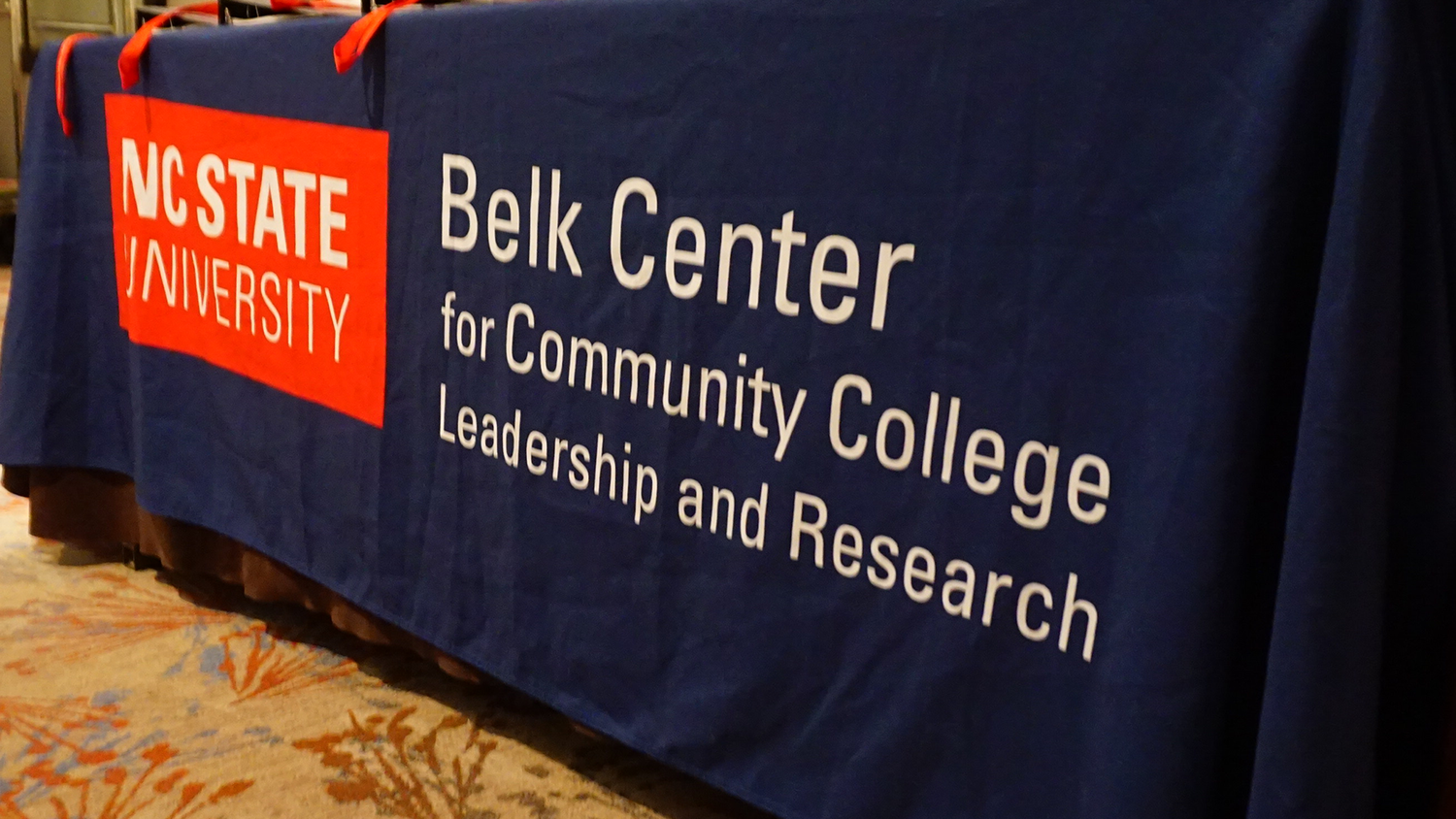Study From Belk Center Research Associates Finds North Carolinas’ Comprehensive Articulation Agreement Helped Modestly Reduce Excess Credit Accumulation for Community College Transfer Students

Roughly 80% of all community college students plan to transfer to a four-year institution, but studies have found that fewer than 15% successfully earn a bachelor’s degree. In addition, while transfer is designed for students to spend two years at each institution, only 8% follow this pathway, leading many to face an accumulation of excess credits and an extended time to degree completion.
A recent report co-authored by research associates at the NC State College of Education’s Belk Center for Community College Leadership and Research examined North Carolina’s revised Comprehensive Articulation Agreement (CAA), designed to help ease transfer pathways between community colleges and University of North Carolina System institutions, and found that it has had modest effects on reducing excess credit accumulation among transfer students.
“Early Effects of North Carolina’s Comprehensive Articulation Agreement on Credit Accumulation Among Community College Transfer Students,” co-authored by Belk Center research associate and doctoral student Rachel Worsham, Assistant Director of Research Andrea DeSantis, Ph.D., Postdoctoral Research Scholar Melissa Whatley, Ph.D., Katie Johnson ‘15MED, ‘18PHD and W. Dallas Herring Professor and Belk Center Executive Director Audrey Jaeger, Ph.D., examined 8 years of data from 16 UNC System schools to determine the ways in which the Comprehensive Articulation Agreement has impacted credit earning behaviors among students since its revision in 2014.
Previous research has shown that, on average, students who transfer from a community college to a four-year institution earn 10 excess credits and take two additional semesters to graduate compared to those who begin at four-year institutions. The recent study found that students who earned an Associate of Arts or Associate of Science degree and transferred under the revised CAA earned three to five fewer credits at graduation, which could result in a potential savings of $380 to $890 in credit fees.
“Practically speaking, if students take fewer excess credits, meaning they enroll in fewer courses, they are spending less money on tuition to earn their degrees. In addition, if students take fewer excess credits, they may reduce their time to degree, which will allow them to enter the workforce earlier and avoid lost wages,” Whatley said. “When transfer pathways are more transparent, we think that they are likely to lead to an increased probability that a transfer student will attain their ultimate goal of attaining a bachelor’s degree.”
The report found that although the Comprehensive Articulation Agreement has helped transfer students to earn fewer excess credits, the effect did not begin until several years after the policy was put into place. Students who transferred under the Comprehensive Articulation Agreement during the 2014-15 academic year, the first year of the revised policy, typically earned one more credit than community college students who were not enrolled in CAA-qualifying degrees. By the 2016-17 academic year, CAA-qualifying students, on average, earned three fewer credits than those in non-CAA qualifying degrees.
The authors suggest the delayed effect may be the result of several factors. For example, students who were already enrolled when the policy was first implemented may have already taken many of their courses and could not choose based on the pathways outlined in the CAA.
In addition, since the 2014 revision required that students take a transfer student success course and develop personalized strategic plans for transfer, students who began at a community college after 2014 may have been more knowledgeable about the transfer process and therefore better able to make more informed course-taking decisions compared to those who began under the prior Comprehensive Articulation Agreement.
Although the revised CAA has led to improvements in excess credit accumulation, the authors note that the change is not as profound as other states with similar agreements, including California where transfer students, on average, accumulated 10 fewer credits.
In addition, in order to make the best use of North Carolina’s Comprehensive Articulation Agreement, students must know which UNC System institution they would like to transfer into and what major they would like to enroll in. This could create barriers, the authors say, for several reasons, including the fact that 80% of undergraduate students change their major at least once before graduation.
On top of that, students who align their community college coursework with a four-year institution they are ultimately denied admission, may not have taken the right courses for the program at the university they choose to attend instead.
The report found that not all North Carolina community college students were affected equally by the CAA policy, as those who graduated from a community college in two years or less experienced a greater reduction in excess credit accumulation. The authors say this is an area that needs more explanation since it is common for students to take more than two years to complete an associate’s degree.
“Although our study has shed light on one aspect of efficiency in the transfer process after the revision of the CAA, there are other outcomes of transfer students that still need the attention of researchers, including bachelor’s degree completion and the amount of time it takes a transfer student to complete a degree,” Worsham said. “Given the Belk Center’s commitment to equity, it is important to understand whether policies like the CAA benefit all students equally and we are continuing this work to explore other indicators of student success like these.”
When offering suggestions for improving structures related to the Comprehensive Articulation Agreement going forward, the authors note that the fact that baccalaureate degree plans for transfer are only published online could be serving as a barrier for students who come from low-income households or students of color, who are statistically less likely to have access to broadband internet or a computer. Additionally, the current CAA system has no mechanism in place to alert students if the baccalaureate degree plan at the institution they hope to attend has changed, and students or their advisors must monitor these updates themselves. The authors mentioned a baccalaureate degree plan that served multiple colleges or across the state as a possible consideration for the future.
Future research, the authors said, should focus on how baccalaureate degree plans are used in the transfer process as well as how students are advised about transfer articulation agreements, including when they first receive information about them.
In addition, since the study showed that credit accumulation was modestly reduced for students who earned Associate of Arts and Associate of Science degrees, future research should compare these students with Associate of Applied Science degree students, who are currently not included in the CAA.
The number of students who earn an Associate of Applied Science degree prior to transferring to a four-year institution is increasing in North Carolina, DeSantis said, even though the degree was traditionally viewed as a stand-alone credential. A comparison could provide an opportunity for policymakers and educators to determine ways to improve transfer success for these students and the potential for an expansion of the Comprehensive Articulation Agreement to project them.
“Overall, we know that the fastest growing jobs in the state will require bachelor’s degrees in the future, so the extent to which policy can support efficient transfer for community college students provides opportunity to promote individual mobility and fill the workforce demands of the state,” DeSantis said. “Efficient transfer is also good for students in the more immediate sense; it can mean they spend less money to obtain a bachelor’s degree and also improves their employment prospects after graduation.”
- Categories:


